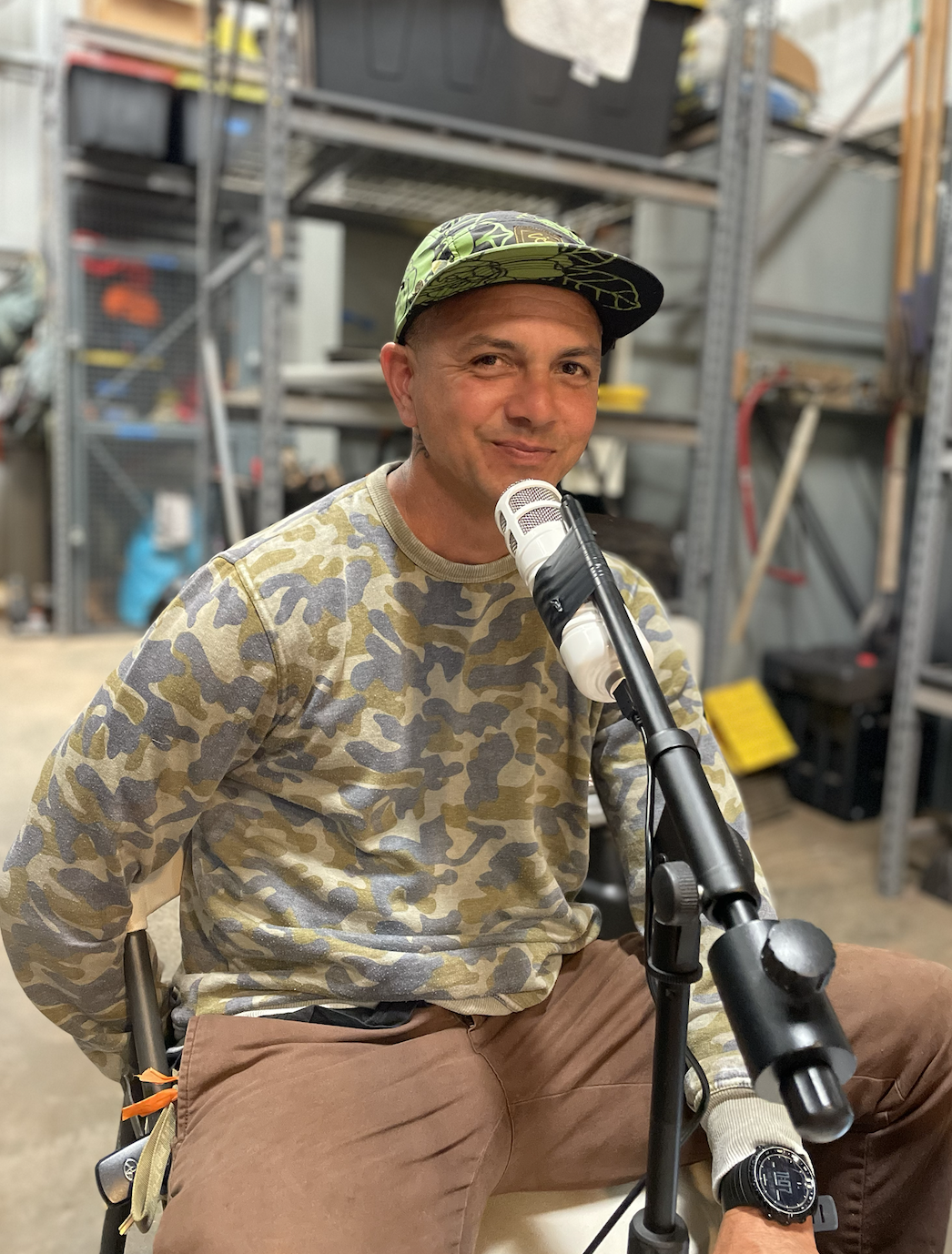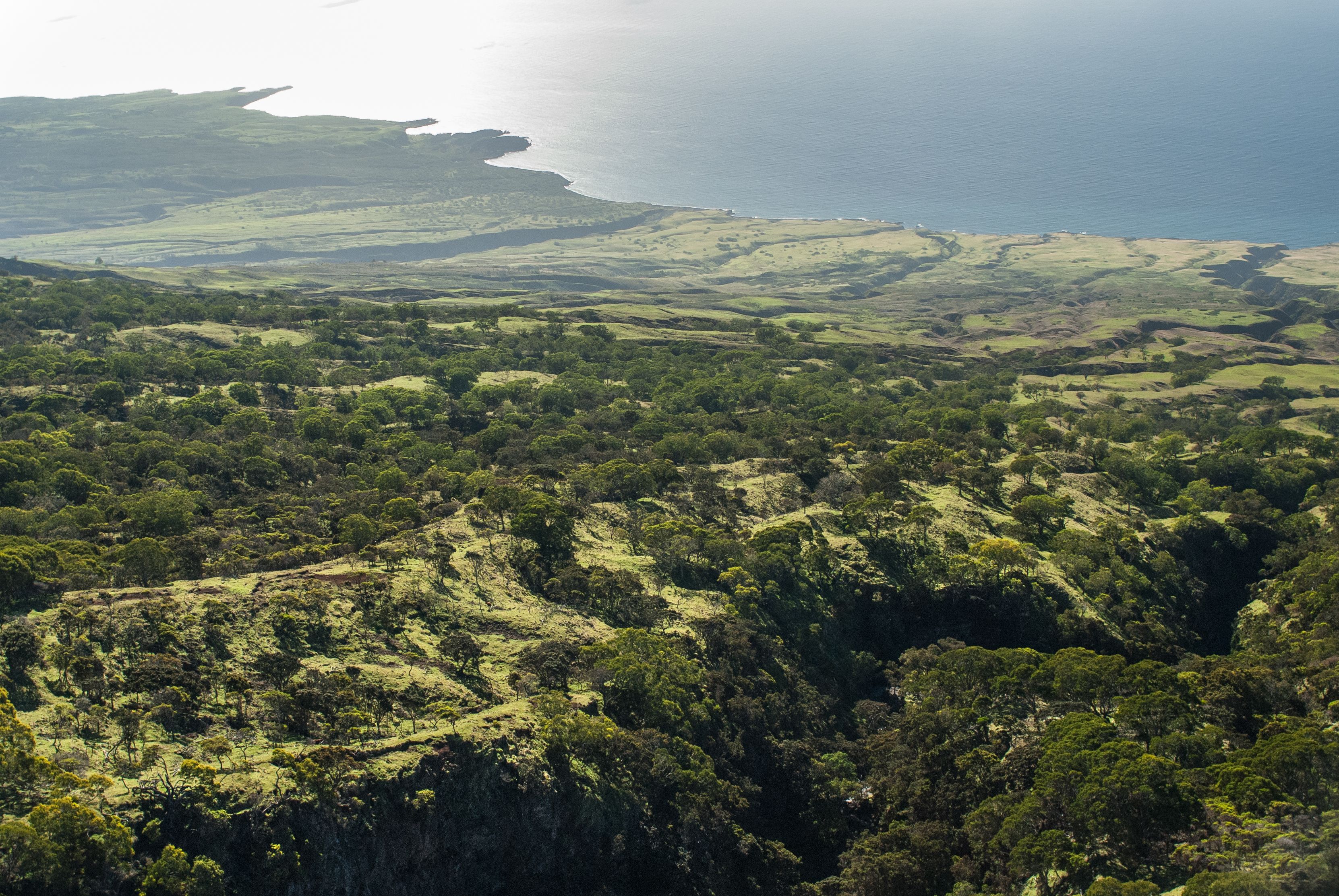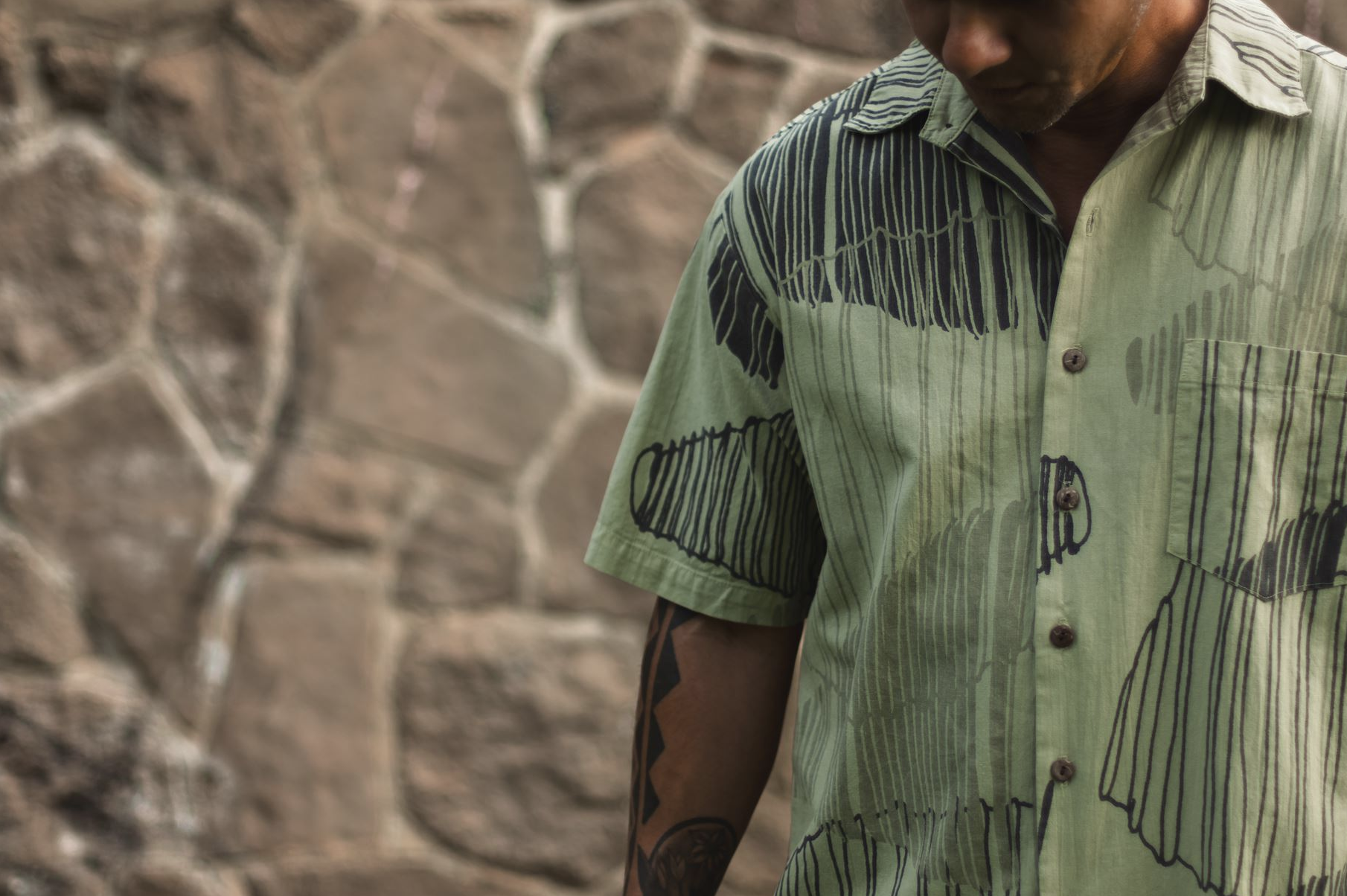Activating ʻĀina Consciousness
How Keahi Bustamente came to care for Hawaiian snails
and the forests they call home

From Air Force mechanic to rare plant and animal specialist, this Maui Nui boy has come full circle back to ʻāina.
If Keahi could give you the “red pill,” he would. He’d love for you to see what he sees every day—the beauty and value of Hawaiian forests, which are nothing like the matrix of alien plants that fill our yards and public spaces. He knows, intimately, how it would change you. It would also make his job of caring for rare and endangered plants and animals (kūpuna) much easier if everyone could appreciate just how critical native habitats are to our survival.
"If you are a kanaka who participates in some form of your culture, whatever it might be, all of that comes from the ʻāina, from the forest. And you can't have it without the forest."
His voice changes when he talks about being in the forest where he rediscovered Newcombia canaliculata, the snail featured in the second design of our Makamaka collaboration with SEPP (the Snail Extinction Prevention Program). “It’s the Palace…That place is the most ʻono in maybe all of Hawaiʻi, just because of the topography—it’s really difficult for animals to get up there.”
Keahi took snails from the Palace to be reared in captivity with the hope of increasing their numbers. He’s got an eye for snails and plants, so this species is just one of several on his rediscovery resume.

Keahi Bustamente, Maui Nui Field Coordinator for SEPP
Keahi Bustamente, Maui Nui Field Coordinator for SEPP
Keahi talks about rediscovering this endemic Hawaiian snail thought to be extinct.
But trying to pull kūpuna back from the brink of extinction wasn’t always Keahi’s passion and career path. A Hapa kid raised on Molokai and Maui, Keahi came through public education in the 80s and 90s, an experience he describes with a single word: Rubbish.
As a teenager, he didn’t see a future of proudly stewarding Maui’s natural resources. By graduation age, he was focused on aviation and poised to leave Hawaiʻi for the military.
“I never saw myself going to college. I saw myself going to a tech school to be a mechanic. The Air Force was my ‘way out’ of this life I didn’t like. Cause was ‘junk.’ ‘Too slow, Maui.’ Nuts, eh?!” says Keahi, shaking his head in disbelief at where his mind was at then.
He worked construction in Los Angeles before joining the Air Force and learning to be a turboprop mechanic. But life in the urban sprawl quickly lost resonance for Keahi, who had grown up playing in the gulches of Kīpū and the streams of Waikapū. “Los Angeles flipped another switch. Just living there and seeing serious development and how messed up that is. It made me appreciate home.”
After four years of living away, Keahi was pulled to return to Maui. He didn’t know he was about to be plugged into the ʻāina at a whole new level. “It’s totally like the Matrix where you get unplugged and the whole life you thought was real is not even real,” says Keahi as he talks about the experiences that made him start to see his life and his island home in a completely different way.
The proverbial red pill came in two doses for Keahi when he moved home to Maui. The first dose was reconnection to ʻike Hawaiʻi (Hawaiian knowledge), which began at UH Maui College. “I took all these Hawaiian Studies classes and learned the real story,” he says, mistrust and irritation entering his voice as he continues, “These guys. They went brainwash me from when I was one kid and got me to sign up for their military, to go do the same thing they went do to my people to other guys.”
The bitterness and pain of that first dose was sweetened and healed by the second: a volunteer trip to Auwahi, the dryforest restoration project on the leeward slopes of Haleakalā, Maui. Dr. Art Medeiros, founder of the reforestation effort, calls it the Ace Hardware of the Hawaiians because it’s home to over 40 species of native trees that form the core of Hawaiian material culture. “I just got this feeling up at Auwahi. This native Hawaiian ecosystem—all these plants working together to form this forest. It just kind of made sense. I needed to try and learn more and help.”

Looking seaward from the slopes of leeward Haleakalā. Pic: Masako Cordray
Looking seaward from the slopes of leeward Haleakalā. Pic: Masako Cordray
After a few volunteer trips to Auwahi, Keahi was hooked. He worked there for five years, replanting native trees that now form legacy forests. When a position opened up with PEPP (the Plant Extinction Prevention Program) for Maui Nui, Keahi wasn’t sure he was qualified. “I thought I needed a degree to get that job, but I didn’t. You just gotta be passionate. Study. Give a shit.” After several years with PEPP, he took his current position with SEPP.
18 years into it and many miles on his knees, Keahi is still fascinated by native habitats. “I find the forest really interesting. Everything. The moss, the mushrooms, the bark on the tree. Why the leaves of one species of plant are different from another. It’s SO special. But if you don’t know the importance of it, it’s hard to feel that.”
Keahi describes Hawaiian watersheds and all their peoples.

Pic: Kelli Cruz
Pic: Kelli Cruz
Snails play a unique role in watershed systems, something Keahi describes with much aloha. “They keeping the ʻōhiʻa and all the trees clean, eating all that moss and soot. Taking care. Washing. It’s like a car getting detailed all the time.”
Theoretically, clean trees can fight disease better, photosynthesize optimally, and play their full role in the watershed. Snails also cycle nutrients and Keahi says we’ve likely underestimated just how much they help, or once helped, with this part of the forest system. “Think about all that kūkae. It gets cycled into the soil, all the bacterias and nutrients.” Sadly, predators like rats and carnivorous snails have decimated native snail populations, disrupting these delicate processes.
These are human-introduced problems that we are failing to address head on. “Right now, we letting the enemy storm the palace,” says Keahi, who works across three islands, each of them with “palace” habitats that need protecting. This gives him a wider perspective of what’s happening to forests and it’s not good: “They’re falling apart. The waʻa (canoe) is sinking. Plenty holes. Guys stay bailing, but we need more help. And we need guys patching while we stay in the water, sinking.”
“I thought I needed a degree to get that job, but I didn’t. You just gotta be passionate. Study."
That he reaches for the waʻa metaphor first is apt, for the very tradition of canoe building cannot continue without the poʻe koa (koa trees) to sustain the art. Keahi draws the connection clearly, “If you are a kanaka who participates in some form of your culture, whatever it might be, all of that comes from the ʻāina, from the forest. And you cannot have that without the forest. How you gonna have waʻa without koa trees, or hōlua sleds without māmane? Even if you one kalo farmer. No more forest, no more water. In that way, I think it is simple. No more dis, you no can have dat.”

The ʻāina and the practices it sustains are powerful motivators for Keahi and he’s clear about who he’s accountable to. “I work for the lāhui. I get paid by the state, but I work for my people.” And while he appreciates all those who dedicate themselves to mālama ʻāina, it’s Hawaiians he hopes will invest themselves the deepest. “I can just do straight labor kine work and a lot of folks do that. But we need to do more than that, I think, especially as kanaka. It’s our kuleana to the thing that gave us life. Nobody is gonna take care of it better than we can.”
Each mile of ʻāina that Keahi’s walked has solidified this knowing in his bones, but it’s those first miles he traveled from America back home to Hawaiʻi that were the most important. Some folks don’t make that journey back, but fortunately Maui Nui kept a hold on Keahi and he heeded the call to hoʻi i ka iwikuamoʻo (return home). Perhaps seeing the importance of protecting Hawaiian forests doesn’t require a move away from home or a red pill; maybe we just need to open our eyes a little wider. As Keahi so eloquently puts it, “We’ve been given the most incredible place in the world. Try look.”

Keahi rocking the men's Kāhuli 2 Aloha shirt.
Keahi rocking the men's Kāhuli 2 Aloha shirt.
A special thanks to Keahi and the folks at SEPP for being our 2023 Makamaka collaborators. To learn more about SEPP click here.
